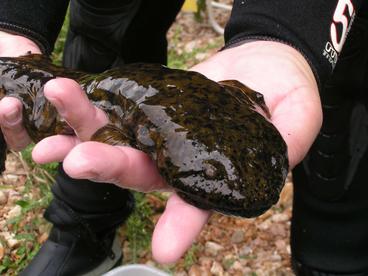
A team of Michigan State University researchers on a Midwest Climate Adaptation Science Center-funded project has found that genetic rescue – moving genetic material from one population to another, either by natural migration or human intervention – is a critical and underused conservation strategy.
The project team, led by MSU Associate Professor Sarah Fitzpatrick, reviewed U.S. Fish and Wildlife Service recovery plans for more than 200 endangered and threatened vertebrate species. Their goal was to determine the extent to which assisted migration for genetic rescue is underused and how many species would potentially benefit from it. They found that two-thirds of the species they evaluated would be good candidates for genetic rescue, but that only three of the USFWS plans included the implementation of genetic rescue.
“These small, isolated populations are becoming more frequent, fragmented and in trouble,” Fitzpatrick told MSU Today, “They might benefit from some human-assisted migration to help infuse deteriorating populations with more genetic variation, which can help them respond to changes in the environment as well.”
It’s not that humans moving species to different areas is rare in and of itself – across taxonomic groups, researchers found that translocation had been implemented in 44% of species. However, it was very rarely used for the purpose of genetic rescue.
“This [translocation] is pretty common in fish management,” said Cinnamon Mittan-Moreau, an MSU postdoctoral fellow on the project and co-author of the study, told MSU Today, "Managers have been moving animals and plants around for more than a century, just not with the intention of increasing genetic variation.”
These findings formally establish that assisted migration for genetic rescue is an underused strategy for the imperiled vertebrates of the U.S. According to the researchers, one potential way forward for wider implementation of assisted migration for genetic rescue is incorporating it as a priority in USFWS Species Status Assessments and recovery plans.
Read the full paper, “Genetic rescue remains underused for aiding recovery of federally listed vertebrates in the United States,” in the Journal of Heredity.
